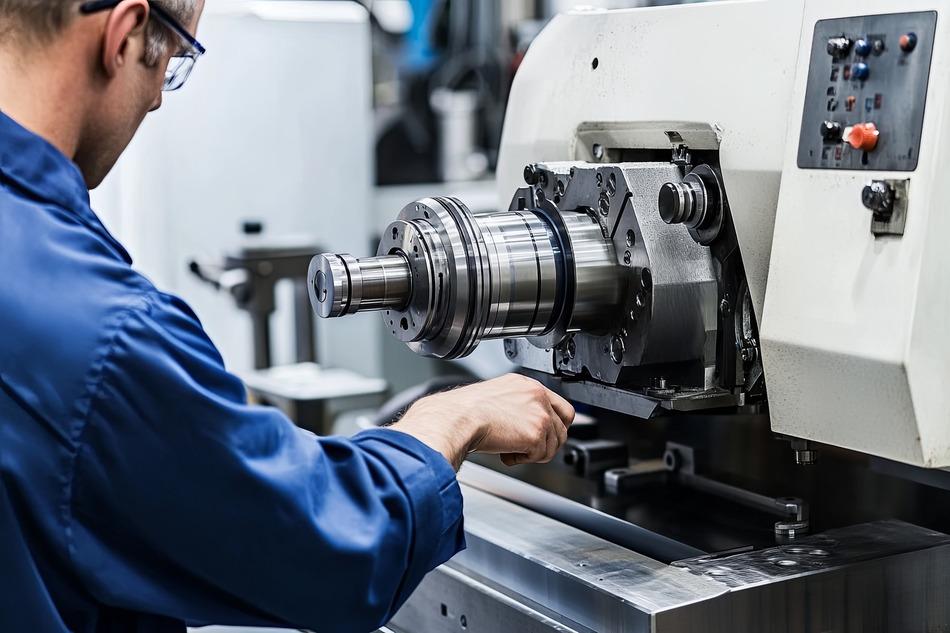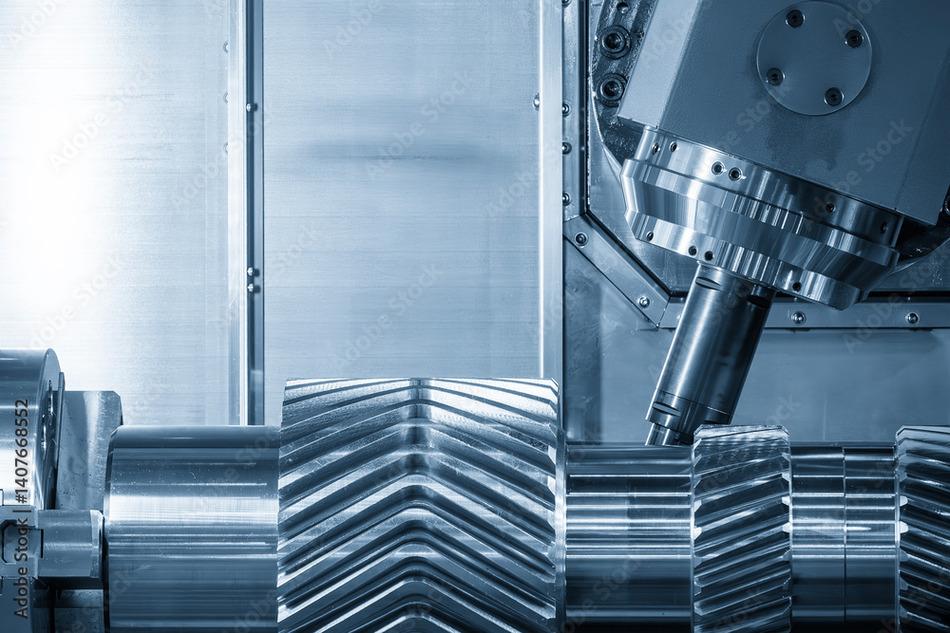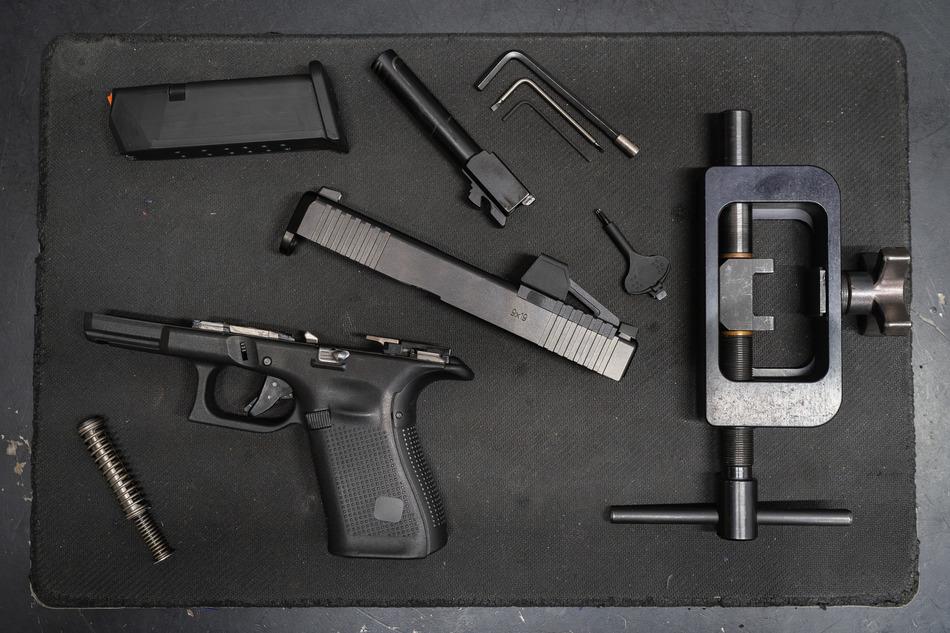CNC Spindle Rebuild: When Is It the Right Choice?
Your CNC spindle is the core of your machine’s cutting power. It drives precision, speed, and productivity. But like any moving part, it wears down over time. When performance drops, shops often face a key question: Should you repair the spindle, rebuild it, or replace it entirely?
CNC spindle repair services can restore full function at a lower cost than a full replacement—but it isn’t always the right choice. In this guide, we’ll explain what a spindle rebuild involves, when it makes the most sense, and how to get the most out of your investment.
What Is a CNC Spindle Rebuild?
Whether you’re managing a job shop, overseeing aerospace production, or just trying to reduce costs and downtime, understanding your spindle options is essential.
A spindle rebuild is a complete teardown and restoration of the spindle assembly. Rather than replacing the entire unit, skilled technicians carefully disassemble the spindle, clean each component, inspect for damage, and replace all worn or out-of-tolerance parts. This typically includes:
- Bearings
- Seals
- O-rings
- Drawbar components
- Balance and runout testing
Once rebuilt, the spindle is reassembled to OEM specifications, tested for accuracy, and returned to you ready for installation. Some rebuild service providers offer upgraded components or balancing for extended performance.
A rebuild is more thorough than a basic spindle repair—which might only involve replacing one component—and costs far less than ordering a brand-new spindle. For many operations, it offers the best balance between performance restoration and budget management.
Signs Your Spindle Needs Rebuilding
CNC spindle wear doesn’t always result in sudden failure. Many early warning signs can signal it’s time to investigate:
- Excessive Vibration
If you notice chatter, tool marks, or surface finish issues, the spindle may be out of balance or suffering from bearing wear. These problems often lead to greater damage if left unaddressed. - Overheating
Spindles that run hot could have cooling problems, degraded grease, or internal wear. Excess heat can shorten tool life and affect accuracy. - Noisy Operation
High-pitched whining, grinding, or clunking noises suggest mechanical failure. This often points to issues with the bearings or improper lubrication. - Poor Part Tolerance
If your machine can no longer hold tight tolerances, spindle accuracy may be compromised. This is especially critical in aerospace and medical machining. - Runout Issues
Increased radial or axial runout can cause tool wear, scrapped parts, and lower productivity. This issue is often caused by bearing degradation or a damaged spindle shaft. - Tool Pullback or Drawbar Failure
Improper tool retention, tool slippage, or sudden tool ejection may stem from worn drawbar components or spring pack fatigue—both of which are commonly replaced during rebuilds.
When Rebuilding Makes the Most Sense
If your spindle has not failed catastrophically but is showing wear, a rebuild can breathe new life into it. Many CNC machines operating at high speeds benefit from regular rebuilds to maintain performance. Machine tool shops often keep a rebuilt spindle in inventory as a drop-in replacement. This allows a worn spindle to be swapped out, rebuilt, and stored as a backup—minimizing downtime.
However, a rebuild isn’t ideal in every case. If the spindle core is cracked, the taper is damaged beyond tolerance, or if the unit has already been rebuilt several times, a full replacement may be more economical in the long run.
How Long Does a CNC Spindle Rebuild Take?
Lead times vary depending on spindle complexity, part availability, and your vendor’s capabilities. On average:
- Simple vertical mill spindles: 5–7 business days
- Motorized or high-speed spindles: 10–14 business days
- Emergency rebuilds: 24–72 hours with premium service
Choosing a spindle repair provider with in-stock replacement parts, a streamlined repair process, and in-house balancing capabilities can drastically shorten turnaround. Ask whether they offer expedited services, pickup, or installation support.
How Much Does a CNC Spindle Rebuild Cost?
Rebuilding a CNC spindle is significantly cheaper than buying new. While costs vary, here are common price ranges:
- 40-taper VMC spindles: $2,000–$3,500
- High-speed or motorized spindles: $4,000–$7,000
- Horizontal mill or boring mill spindles: $7,500–$12,000
Quotes generally include inspection, cleaning, part replacement, reassembly, balancing, and testing. If major parts like shafts or tapers are damaged, additional charges may apply. Most rebuild service providers will provide a full breakdown of costs after visual inspection.
The Rebuilding Process: Step-by-Step
Here’s what a typical CNC spindle rebuild looks like:
- Incoming Inspection – Technicians evaluate the spindle and record runout, vibration, and drawbar force.
- Disassembly – The spindle is carefully disassembled and each part is cataloged.
- Cleaning – All reusable components are thoroughly cleaned.
- Measurement & Evaluation – Critical parts are measured against OEM specs. Bearings and seals are replaced.
- Balancing & Assembly – New components are installed, and the spindle is balanced dynamically.
- Testing – The rebuilt spindle is tested for drawbar force, runout, thermal performance, and noise.
Shops that follow this rigorous rebuilding process can ensure your spindle operates with near-new performance.
How to Get the Most from Your CNC Spindle Rebuild
To maximize the value of your rebuild, follow these best practices:
- Inspect Regularly
Create a preventive maintenance plan that includes drawbar force checks, runout inspections, and grease cycle validation. - Use Correct Lubricants
Improper lubrication is a leading cause of spindle failure. Use only approved greases or oils, and follow the application schedule. - Monitor Conditions in Real Time
Use vibration sensors and thermal monitoring to catch issues early. Modern control systems can help track anomalies and schedule service before damage occurs. - Keep Coolant and Air Systems Clean
Clogged coolant lines or air purge systems reduce cooling efficiency, causing thermal stress on internal components. - Train Operators on Proper Use
Make sure all machinists know how to warm up the spindle, check for noise, and report performance issues. Simple habits reduce wear.
Final Thoughts: Rebuild or Replace?
A precision spindle is critical to keeping your CNC machines operating at their best. A CNC spindle rebuild is often the smartest way to extend the life of your machine, restore full performance, and minimize downtime. With the right spindle rebuild service, rebuilt spindles can rival brand-new units in precision and reliability.
Not sure if your spindle is a candidate for rebuilding?
📞 Contact us today at In-House CNC by calling (951) 540-4820. We offer state-of-the-art diagnostics, fast turnaround, and expert support to keep your machine tool fleet performing at high speeds with confidence.



